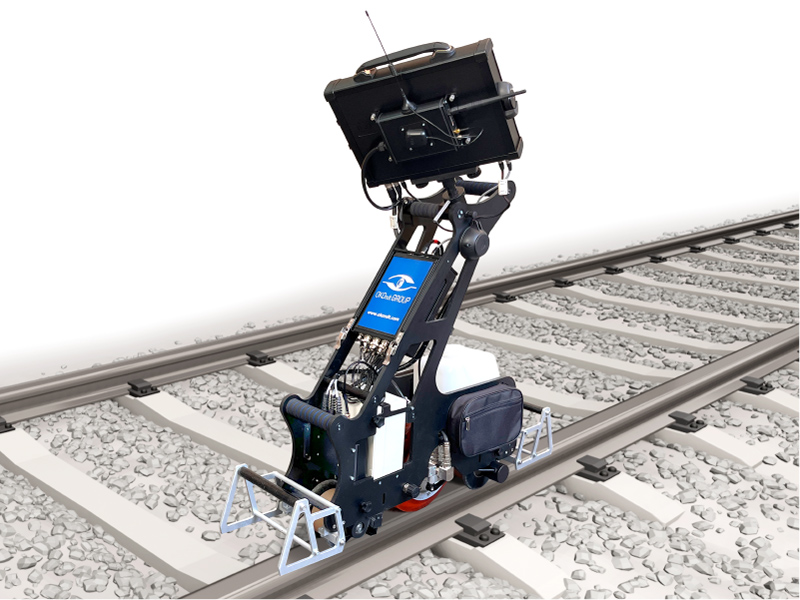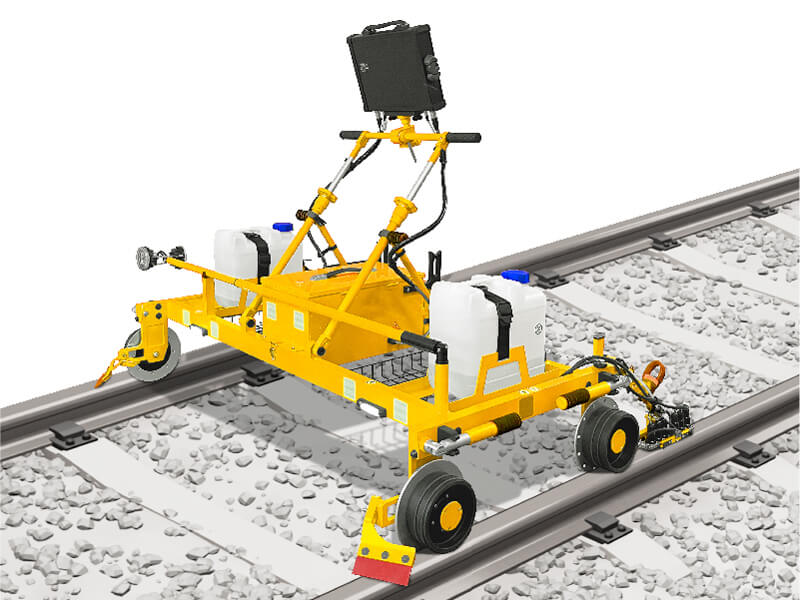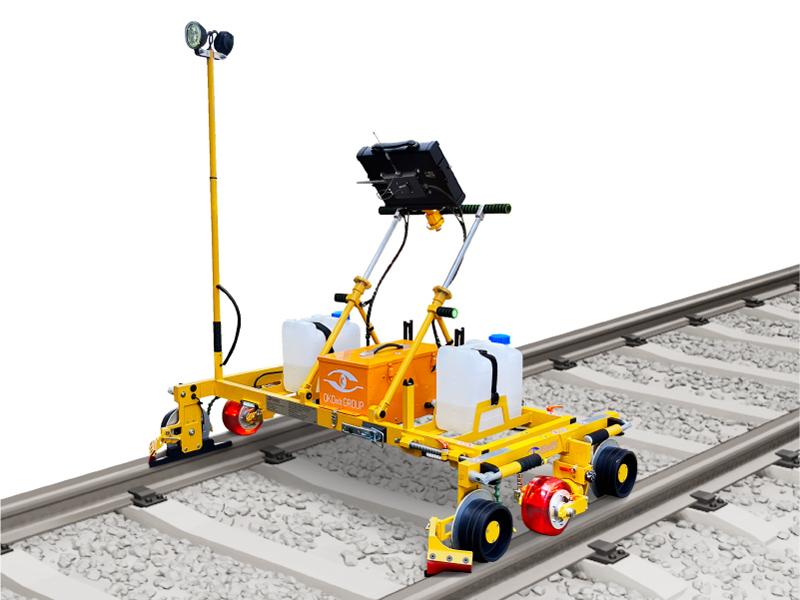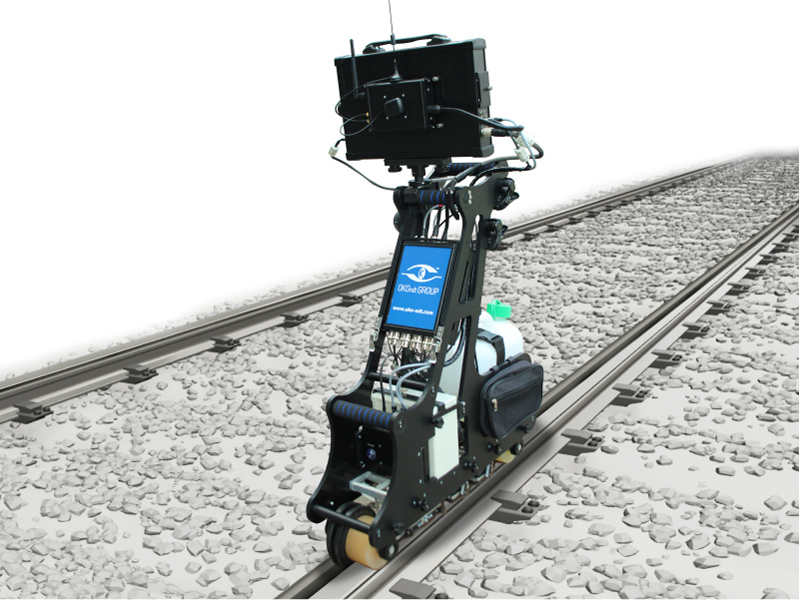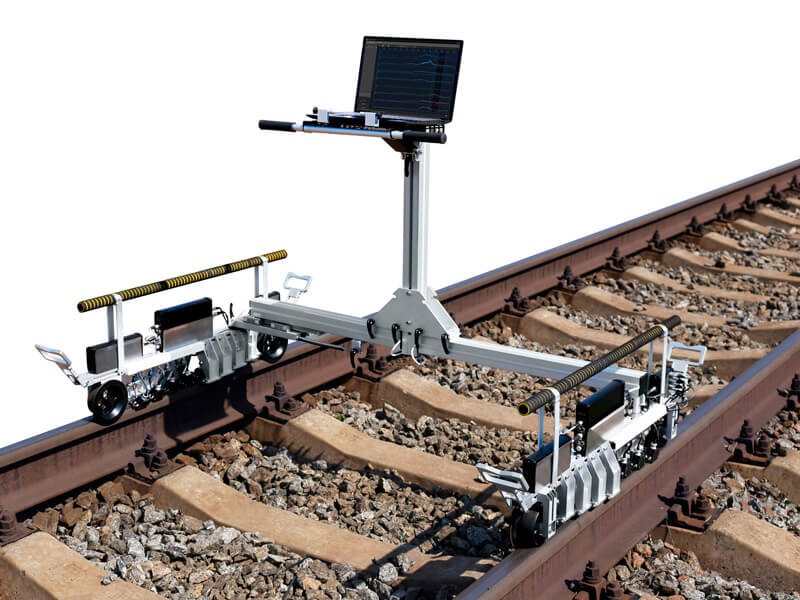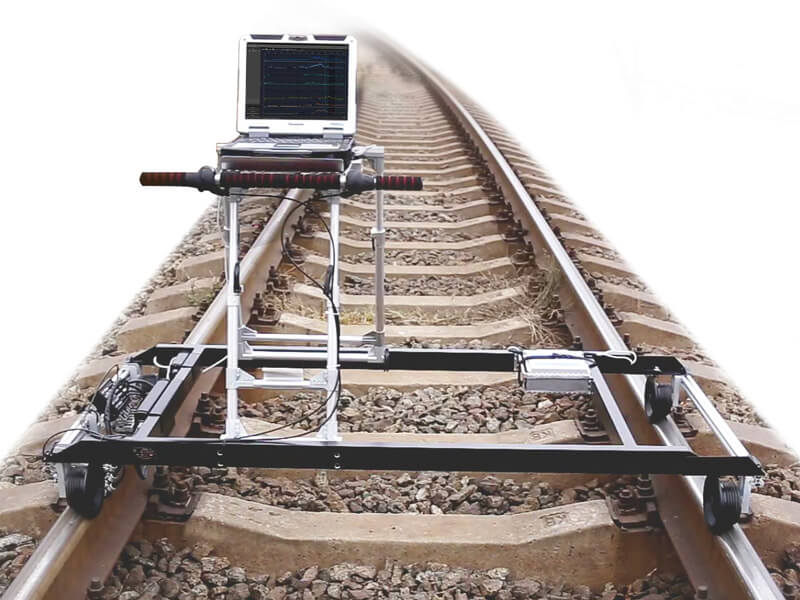Use of Hand-Pushed Trolleys for NDT Inspection of Railway Tracks
An NDT technician pushes a single- or double-rail flaw detector trolley along a track while walking alongside it during inspection. Data from the ultrasonic probes are continuously displayed on the monitor for visual analysis. When a potential defect is detected, the device emits audible and visual signals. The NDT technician then stops and notes the presence and exact location of the defect.
During the inspection process, the rail flaw detector automatically records the test results in its memory. Defect data can also be transmitted online to a remote NDT specialist at any time, which helps accelerate the decision-making process regarding further train movement along the inspected section of track.
Advantages of Ultrasonic Testing Carts for Railway Tracks
- Lightweight. Depending on the configuration and model, the rail flaw detector weighs between 51 pounds (23 kilograms) and 110 pounds (50 kilograms). This lightweight design allows one or two operators to quickly place this ultrasonic testing cart on the rails or remove it to let a train pass.
- Easy Operation. An intuitive software interface, real-time visualization of inspection results on a large, bright monitor, and automatic defect alarms enable NDT technicians to quickly learn and confidently operate the flaw detector on railway tracks.
- Flexibility of Use. Thanks to its compact size, the cart can be transported in an auto and used for quick NDT inspection of problematic sections of railroad. It can also be carried to areas without access roads, such as mining tracks or remote rail lines.
Rail Testing Equipment Manufactured by OKOndt GROUP
OKOndt GROUP develops and supplies single- and double-rail flaw detectors for testing short sections of railways and light rail lines. This equipment can fully test one or two rails on a track.
- Single-rail flaw detectors are best suited for urgent inspections, including repeated and emergency inspections on sections with narrowed tracks, blind intersections, obstacles, and small-radius curves. Only one operator is needed for operation, which increases team mobility.
- Double-rail flaw detectors are recommended for routine, scheduled inspections of longer, less complex railway sections because productivity is important in these situations. The frames of double-rail flaw detector trolleys are adjustable to fit any track gauge between 37.4 and 66 inches (950 and 1,676 millimeters). This type of rail flaw detector sometimes requires more people to operate
Depending on the configuration, rail flaw detectors are equipped with ultrasonic probe units that are designed as either sliding blocks or immersion wheels (RSUI).
Sales & Partnership Proposals
OKOndt GROUP invites companies interested in hand-pushed rail flaw detector trolleys to collaborate. Contact us for expert advice on selecting the most suitable ultrasonic rail testing equipment for your track inspection needs.
Related products:

